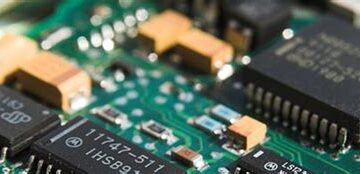New Adhesive Bonds at -40°C, Opening Up New Applications for Electronics Assembly
MacDermid Alpha Electronics Solutions, a world leader in specialty materials for electronics assembly, has announced the launch of its latest innovation: ALPHA OM-301, an Ultra-Low Temperature Adhesive designed for bonding heat-sensitive components in electronic devices. This revolutionary new adhesive cures at temperatures as low as -40°C (-40°F), making it ideal for applications where traditional adhesives that require heat curing could damage delicate parts.
Meeting the Challenges of Heat-Sensitive Components
Modern electronics increasingly make use of parts with strict temperature limits, such as:
- Sensors and optical components
- Batteries and displays
- Biometric devices
- Medical wearables
Bonding these temperature-sensitive components into devices poses a challenge for manufacturers, as most adhesives require exposure to high temperatures, typically over 100°C, to cure and form a strong bond. Exceeding the safe temperature limit of the components during the assembly process can degrade performance or permanently damage the part.
ALPHA OM-301 solves this problem with its ability to fully cure at or below -40°C, far lower than the typical operating and storage temperatures of even the most delicate electronic components. This opens up new design possibilities and allows the use of cutting-edge technology in a wider range of products.
How It Works
ALPHA OM-301 is a two-part epoxy adhesive. When the resin and hardener are mixed, it begins to cure through a polymerization reaction, gradually hardening even at ultra-low temperatures. The curing process can be accelerated by exposure to UV light, making it adaptable to different manufacturing processes and throughput requirements.
The adhesive forms permanent, high-strength bonds between various substrates commonly used in electronics, including:
| Substrate | Example Applications |
|---|---|
| PCBs | Bonding components, wire tacking |
| Silicon, glass | Sensor packaging, MEMS |
| Ceramics | RF components, filters |
| Metals | Frames, connectors, shielding |
| Plastics | Structural parts, housings |
In addition to its unique low-temperature curing, ALPHA OM-301 has several other desirable properties for electronics manufacturing:
- Electrically insulating
- Thermally conductive
- Low shrinkage during cure
- Thixotropic (non-slumping)
Performance Testing
Extensive testing by MacDermid Alpha’s research team has demonstrated the reliability of ALPHA OM-301 for a range of applications. Key findings include:
| Property | Result |
|---|---|
| Shear strength | 25 MPa on aluminum |
| Flexibility | Able to withstand flexing and vibration |
| Thermal cycling | No cracking from -40°C to 85°C |
| Operating temperature | -55°C to 150°C |
| Dielectric strength | >20 kV/mm |
These properties make ALPHA OM-301 suitable not just for initial assembly, but also for products that must perform in harsh operating environments such as the outdoors, high-altitude, and aerospace applications. The adhesive is also expected to enable novel wearable and implantable medical devices.
Pushing the Boundaries of Electronics Manufacturing
The launch of ALPHA OM-301 comes as part of MacDermid Alpha’s ongoing efforts to solve tough challenges in electronics assembly. As a leading supplier of solder, fluxes, and functional materials, the company has a deep understanding of the needs of electronics manufacturers.
“Our customers are always looking for ways to increase capabilities, whether that means using newer components or making products for harsher environments,” said Joe D’Ambrisi, Vice President of MacDermid Alpha Electronics Solutions. “ALPHA OM-301 is a real breakthrough that will allow the use of cutting-edge sensors, batteries, and other devices that were previously off limits for many applications due to assembly temperature restrictions.”
Applications and Industries
ALPHA OM-301 is expected to find use across multiple industries that rely on advanced electronics, including:
- Automotive, especially electric and autonomous vehicles
- Aerospace and defense
- Medical devices
- Industrial equipment
- Consumer electronics
Some specific applications where the ultra-low temperature adhesive could add value include:
- LiDAR and other optical sensor modules for autonomous systems
- Thermal imaging cameras for firefighting and industrial inspection
- Wearable health monitors and drug delivery devices
- Ruggedized computers and displays for field use
- High-altitude drones and balloons for communication and research
In all these cases, the ability to securely bond advanced, temperature-sensitive components will allow designers to push the envelope and create innovative new products.
A Collaborative Development Process
ALPHA OM-301 was developed through close collaboration between MacDermid Alpha’s research team and key customers in the electronics industry. By deeply understanding real-world manufacturing challenges and product requirements, the company was able to tailor the adhesive’s properties to meet pressing needs.
“Throughout the development process, we worked hand-in-hand with several large electronics manufacturers to test and refine the adhesive formulation,” said Alison Tyler, R&D Manager at MacDermid Alpha. “This collaborative approach ensured that ALPHA OM-301 not only works in the lab but meets all the demands of high-volume manufacturing and real-world product functionality.”
As an example, one early user of ALPHA OM-301 is a leading maker of augmented reality glasses. The optical engines in these products include delicate liquid crystal on silicon (LCoS) displays with a maximum safe temperature of only 45°C. By switching to ALPHA OM-301 for bonding the displays and optics, the manufacturer was able to improve yields and reliability compared to previous adhesives.
Enabling the Future of Electronics
With the launch of ALPHA OM-301, MacDermid Alpha has opened up new possibilities for electronics designers and manufacturers. By removing temperature constraints for component bonding, this ultra-low temperature adhesive will enable the use of more advanced, delicate parts in a wider range of products and environments.
As the electronics industry continues to evolve, with ever-increasing demands for performance, miniaturization, and harsh environment reliability, ALPHA OM-301 will be a valuable tool for bringing cutting-edge devices to market. MacDermid Alpha is proud to once again be at the forefront of enabling the future of electronics.

Frequently Asked Questions
What is the minimum curing temperature for ALPHA OM-301?
ALPHA OM-301 can cure at temperatures as low as -40°C (-40°F). This is significantly lower than traditional adhesives used in electronics assembly, which typically require temperatures above 100°C.
What surfaces can ALPHA OM-301 bond?
ALPHA OM-301 can bond a wide variety of substrates used in electronics, including PCBs, silicon, glass, ceramics, metals, and plastics. It forms high-strength, permanent bonds that can withstand harsh environments.
Is ALPHA OM-301 electrically conductive?
No, ALPHA OM-301 is electrically insulating. This makes it suitable for bonding components to PCBs and other applications where conductivity is not desired. The adhesive has a dielectric strength greater than 20 kV/mm.
How does ALPHA OM-301 cure?
ALPHA OM-301 is a two-part epoxy adhesive. When the resin and hardener are mixed, it begins to cure through a polymerization reaction, even at ultra-low temperatures. The curing process can be accelerated by exposure to UV light if desired.
What is the operating temperature range for ALPHA OM-301?
Products assembled with ALPHA OM-301 can operate across a wide temperature range, from -55°C to 150°C. This makes the adhesive suitable for use in harsh environment applications such as aerospace, automotive, and industrial equipment.



0 Comments